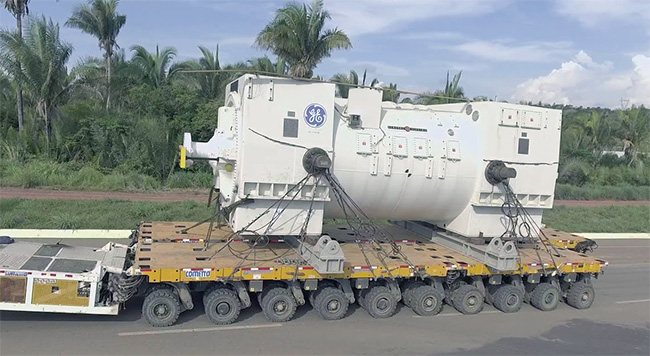A gigantic apparatus was set up for the operation, including the PRF assisting in the journey.
The truck driver experiences in his day to day several obstacles in the traffic to take orders, products or some material that needs to reach the final destination. Today we are going to show one of the biggest challenges that the highways and the professionals who were involved in an operation had in Brazil.
The traffic of a large object mobilized a team of workers to carry out the largest special transport in the country. The load that was being carried was from a turbine with gigantic dimensions.
The object was 106 meters long and weighed 359 tons. Its route to its final destination included sections leaving from the port of Itaqui, BR-135 (which was banned) until the arrival at the thermoelectric plant in Santo Antônio dos Lopes.
This difficult route took place between November and December 2020, becoming the largest special transport ever carried out in Brazil.
HOW WAS THE TRANSPORT?
The apparatus was immense and brought together a large and specialized team that worked tirelessly 24 hours a day together with the help of the Federal Highway Police (PRF) on the stretch of BR-135 that was blocked for more than a day, all for the safe traffic of the turbine.
During this period of transport, the turbine had to be taken relying only on road transport, traveling along the roads in Maranhão, including the very important BR-135 and stretches with bridges that could not support the weight of the vehicle, which together with the load added up to 816 tons.
A part of the team focused on assembling a kind of “over bridge” where its installation took more than 5 hours to complete. This feature was designed to minimize the impact of the turbine's weight on the bridges.

Photo: TransData
TRANSSHIPPING THE PIECE:
After 14 days of the object leaving the Port of Itajaí, the turbine manages to arrive in Santo Antônio dos Lopes (Maranhão) and another challenge would be faced by the team, the transshipment of the cargo.
A metallic support and elevation structure was assembled so that the load could be lifted within all safety parameters, in addition to the aid of a computerized system that was monitored by engineers.
Source: www.brasildotrecho.com.br


